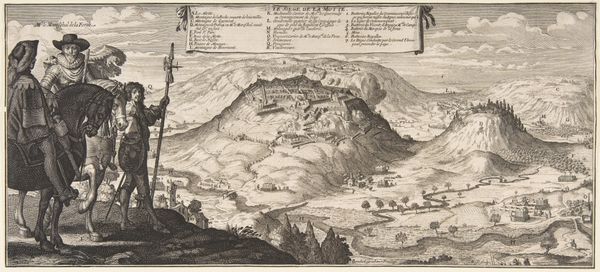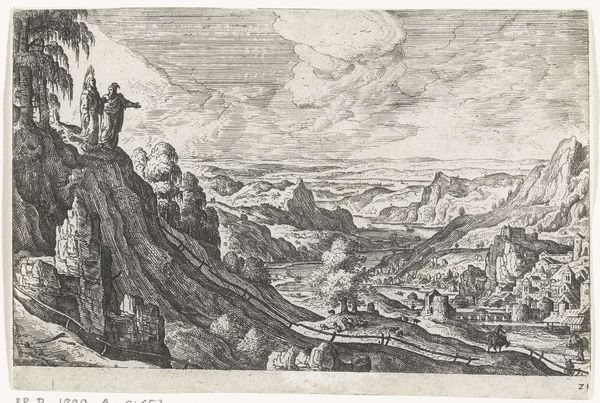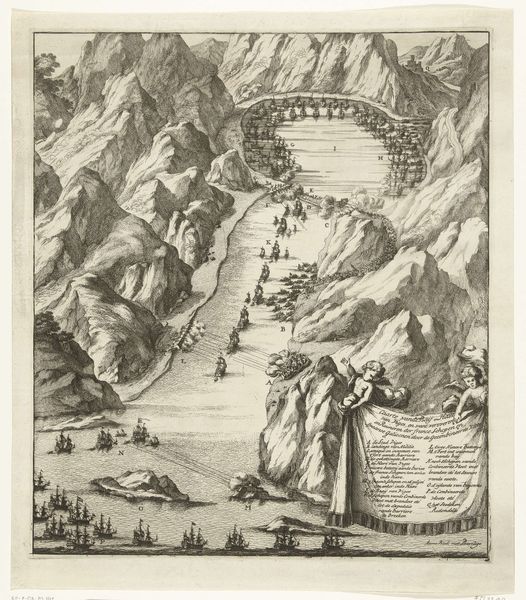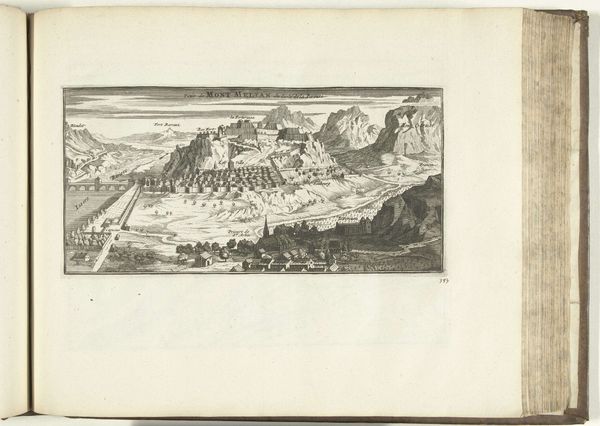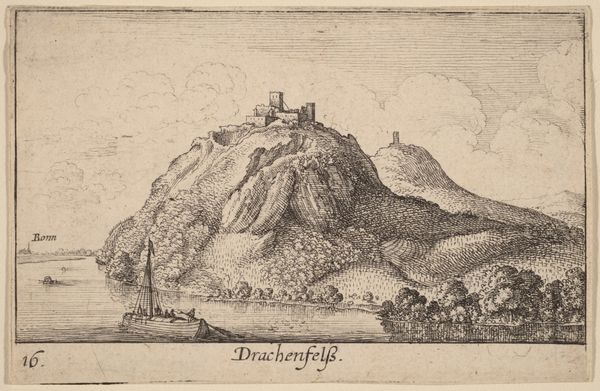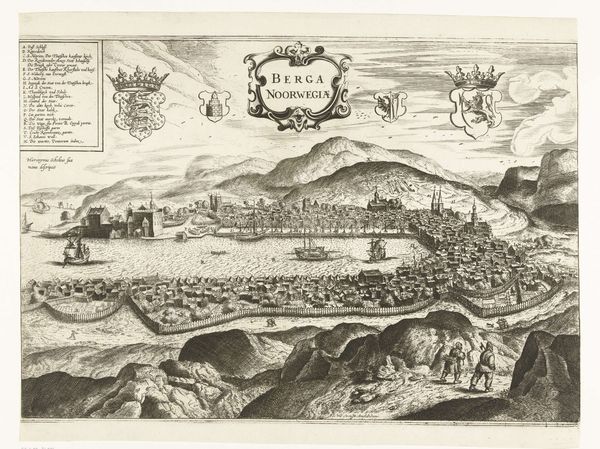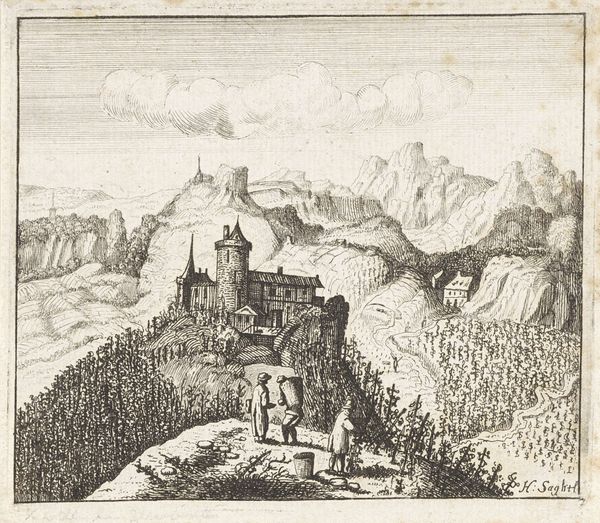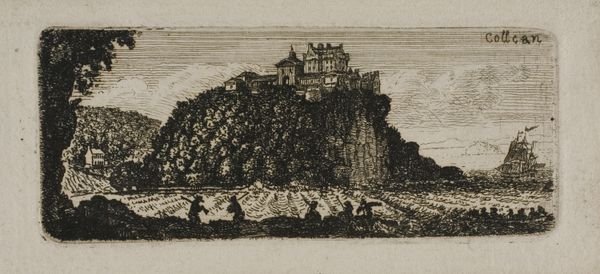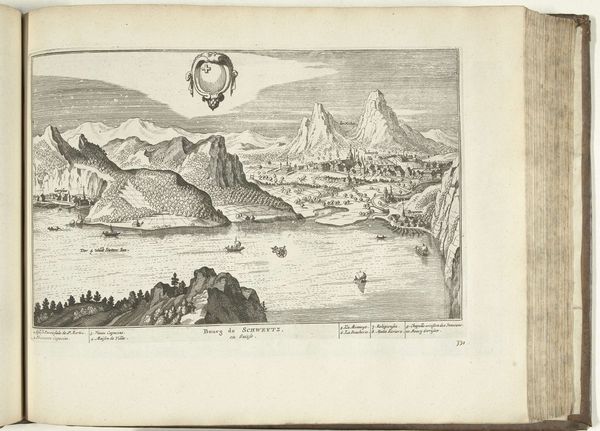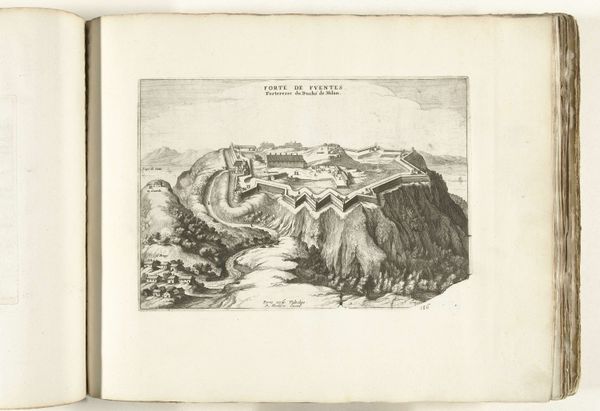
print, engraving
#
baroque
# print
#
pen sketch
#
landscape
#
cityscape
#
engraving
Dimensions: height 98 mm, width 123 mm
Copyright: Rijks Museum: Open Domain
Curator: Look at this engraving, “Gezicht op Szádvár” by Gaspar Bouttats, created around 1686. It depicts a somewhat romanticized view of Szádvár Castle. Editor: It strikes me as austere, even lonely. That jagged peak with a fortified structure looks so imposing, a visual statement of power over a seemingly inaccessible terrain. Curator: Right, let's delve into that. Szádvár was a strategically important Hungarian castle. An image like this served not just as a record but as a statement of territorial dominance. Its starkness isn't just aesthetic; it speaks to the political climate of the time. Editor: And the symbolic weight of height… the castle so visually elevated. Is this meant to suggest a connection between the earthly realm and the divine? In older symbology, mountains have represented enlightenment. Here, the castle atop the mountain claims both earthly and spiritual authority. Curator: That's an insightful point. The upward-pointing composition invites us to consider what and *who* is excluded from that position of power, literally, who cannot scale the heights and figuratively who cannot attain the status of nobility and privilege inside the fortress. I see a discourse of both class and geopolitics. Editor: The little figures making their way up appear rather fragile, dwarfed by the natural world surrounding them, or even the looming darkness of the sketched rocks. Their relative insignificance further amplifies the impression of dominance communicated by the upper settlement. It even brings to mind how cartography itself can be a visual claim of control. Curator: Indeed! That plays directly into its creation and consumption. Bouttats wasn't just recording a landscape; he was participating in shaping perceptions of power and ownership at a moment when geographic expansion defined states' policies. Editor: Reflecting on this, what I initially perceived as austerity now resonates with a more calculated sense of control. It goes beyond simple representation of place to suggest the psychology behind territorial ambition. Curator: Precisely, these landscapes become more than meets the eye as a visual performance, reminding us of the complex interplay between place, power, and representation.
Comments
No comments
Be the first to comment and join the conversation on the ultimate creative platform.

